Determination of Secondary Cooling Zone Heat Transfer Coefficient with Different Alloy Types and Roughness in DC Casting by Inverse Heat Conduction Method
Abstract
1. Introduction
2. Experimental Method and Numerical Model Description
2.1. Experimental Method
2.2. Inverse Heat Transfer Model
3. Error Analysis of Inverse Results
4. Results and Discussion
4.1. Comparison of HTC with Different Alloys
4.2. Effect of Surface Morphology of Ingot on HTC
4.3. Determination of HTC in Different Roughness
4.3.1. Impingement Zone
4.3.2. Free−Falling Zone
5. Conclusions
Author Contributions
Funding
Institutional Review Board Statement
Informed Consent Statement
Data Availability Statement
Conflicts of Interest
References
- Mordike, B.L.; Ebert, T. Magnesium: Properties–Applications–Potential. Mater. Sci. Eng. A 2001, 302, 37–45. [Google Scholar] [CrossRef]
- Karanpreet, S.; Suri, N.M. Magnesium Alloys and Its Machining: A Review. Int. Res. J. Eng. Technol. 2016, 3, 9. [Google Scholar]
- Chen, X.; Jia, Y.; Shi, Z.; Le, Q.; Li, J.; Zhang, M.; Liu, M.; Atrens, A. Understanding the discharge behavior of an ultra-high-purity Mg anode for Mg–air primary batteries. J. Mater. Chem. A 2021, 9, 21387–21401. [Google Scholar] [CrossRef]
- Chen, X.; Liu, X.; Le, Q.; Hang, M.; Liu, M.; Atrens, A. A comprehensive review of the development of magnesium anodes for primary batteries. J. Mater. Chem. A 2021, 9, 12367–12399. [Google Scholar] [CrossRef]
- Lalpoor, M.; Eskin, D.G.; Ruvalcaba, D.; Fjær, H.G.; Ten Cate, A.; Ontijt, N.; Katgerman, L. Cold Cracking in DC-Cast High Strength Aluminum Alloy Ingots: An Intrinsic Problem Intensified by Casting Process Parameters. Mater. Sci. Eng. A 2011, 528, 2831–2842. [Google Scholar] [CrossRef]
- Cui, J.; Zhang, Z.; Le, Q. DC Casting of Light Alloys under Magnetic Fields. Trans. Nonferrous Met. Soc. China 2010, 20, 2046–2050. [Google Scholar] [CrossRef]
- Chen, X.; Jia, Y.; Liao, Q.; Le, Q.; Ning, S.; Yu, F. The simultaneous application of variable frequency ultrasonic and low frequency electromagnetic fields in semi continuous casting of AZ80 magnesium alloy. J. Alloy. Compd. 2019, 774, 710–720. [Google Scholar] [CrossRef]
- Grandfield, J.F.; Eskin, D.G.; Bainbridge, I.F. Direct-Chill Casting of Light Alloys: Science and Technology; John Wiley and Sons: Hoboken, NJ, USA, 2013. [Google Scholar]
- Grandfield, J.F.; Hoadley, A.; Instone, S. Water Cooling in Direct Chill Casting: Part 1, Boiling Theory and Control. In Essential Readings in Light Metals: Volume 3 Cast Shop for Aluminum Production; Grandfield, J.F., Eskin, D.G., Eds.; Springer International Publishing: Cham, Switzerland, 2016; pp. 681–689. ISBN 978-3-319-48228-6. [Google Scholar]
- Weckman, D.C.; Niessen, P. A Numerical Simulation of the D.C. Continuous Casting Process Including Nucleate Boiling Heat Transfer. Metall. Trans. B 1982, 13, 593–602. [Google Scholar] [CrossRef]
- Zhang, H.; Nagaumi, H.; Zuo, Y.; Cui, J. Coupled Modeling of Electromagnetic Field, Fluid Flow, Heat Transfer and Solidification during Low Frequency Electromagnetic Casting of 7XXX Aluminum Alloys. Mater. Sci. Eng. A 2007, 448, 189–203. [Google Scholar] [CrossRef]
- Hao, H.; Maijer, D.M.; Wells, M.A.; Cockcroft, S.L.; Sediako, D.; Hibbins, S. Development and Validation of a Thermal Model of the Direct Chill Casting of AZ31 Magnesium Billets. Metall. Mater. Trans. A 2004, 35, 3843–3854. [Google Scholar] [CrossRef]
- Chen, L.; Le, Q.; Zhao, D.; Jia, Y.; Bao, L.; Yan, J.; Hu, W. Study on Boiling Heat Transfer in Secondary Cooling Zone of DC Casting of Magnesium Alloy Based on Inverse Heat Conduction Method. Foundry 2022, 71, 432–436. [Google Scholar]
- Pioro, I.L.; Rohsenow, W.; Doerffer, S.S. Nucleate Pool-Boiling Heat Transfer. I: Review of Parametric Effects of Boiling Surface. Int. J. Heat Mass Transf. 2004, 47, 5033–5044. [Google Scholar] [CrossRef]
- Ali, K.; Amna, R.; Rashid, M.U.; Malik, M.I.; Kim, K. An Investigation of the Influence of Surface Roughness, Water Quality and Nozzle on Spray Cooling of Aluminum Alloy 6082. Therm. Sci. Eng. Prog. 2019, 10, 280–286. [Google Scholar] [CrossRef]
- Lee, J. Effects of Surface Roughness on Stagnation Heat Transfer of Impinging Liquid Jet on Metal Surface. J. Fluid Sci. Technol. 2010, 5, 64–74. [Google Scholar] [CrossRef][Green Version]
- Park, C.W.; Cho, H.C.; Kang, Y.T. The Effect of Heat Transfer Additive and Surface Roughness of Micro-Scale Hatched Tubes on Absorption Performance. Int. J. Refrig.-Rev. Int. Froid 2004, 27, 264–270. [Google Scholar] [CrossRef]
- Liu, X.; Liu, J.; Xue, R.; Chen, L.; Hou, Y. Heat Transfer Optimization of R134a Phase Change Spray Cooling in a Closed Loop System. Exp. Therm. Fluid Sci. 2018, 92, 248–258. [Google Scholar] [CrossRef]
- Pais, M.; Chow, L.; Mahefkey, E. Surface-Roughness and Its Effects on the Heat-Transfer Mechanism in Spray Cooling. J. Heat Transf.-Trans. ASME 1992, 114, 211–219. [Google Scholar] [CrossRef]
- Zhang, L.Q.; Li, L.X.; Tan, W.F.; Xu, R. Inverse Heat Conduction Model for Determining Interfacial Heat Transfer Coefficient during Casting Solidification. Chin. J. Nonferrous Met. 2014, 24, 82–90. [Google Scholar]
- Bernardin, J.D.; Mudawar, I. Experimental and Statistical Investigation of Changes in Surface Roughness Associated with Spray Quenching. Int. J. Heat Mass Transf. 1996, 39, 2023–2037. [Google Scholar] [CrossRef]
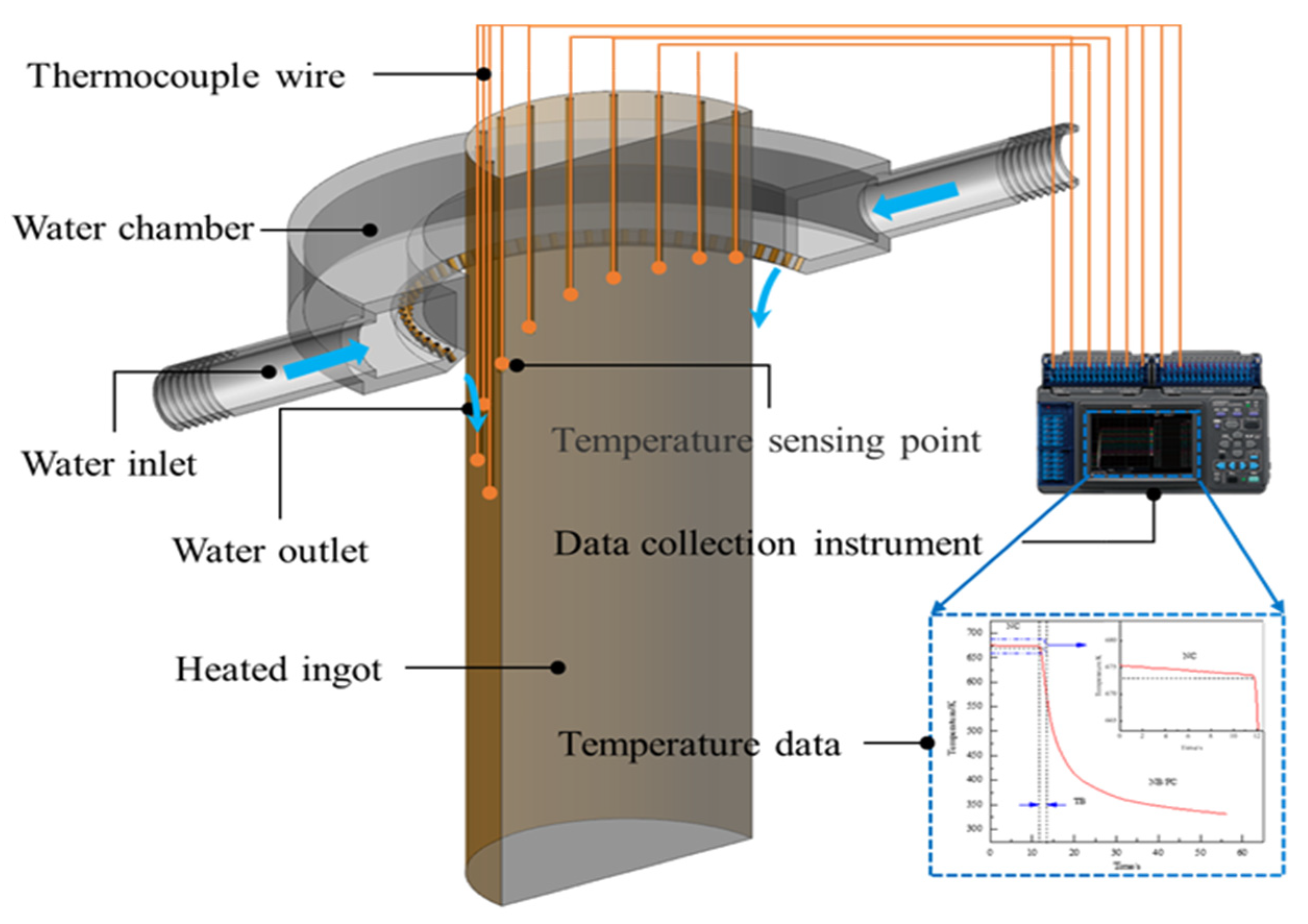


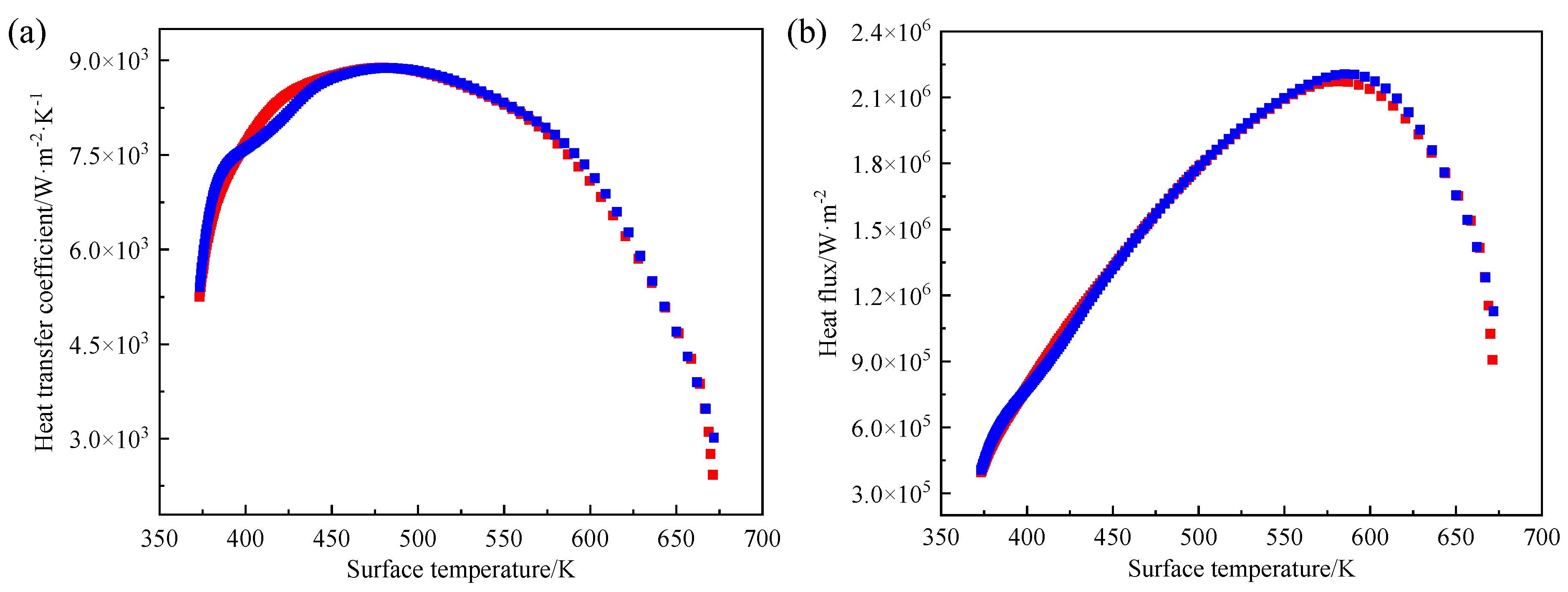
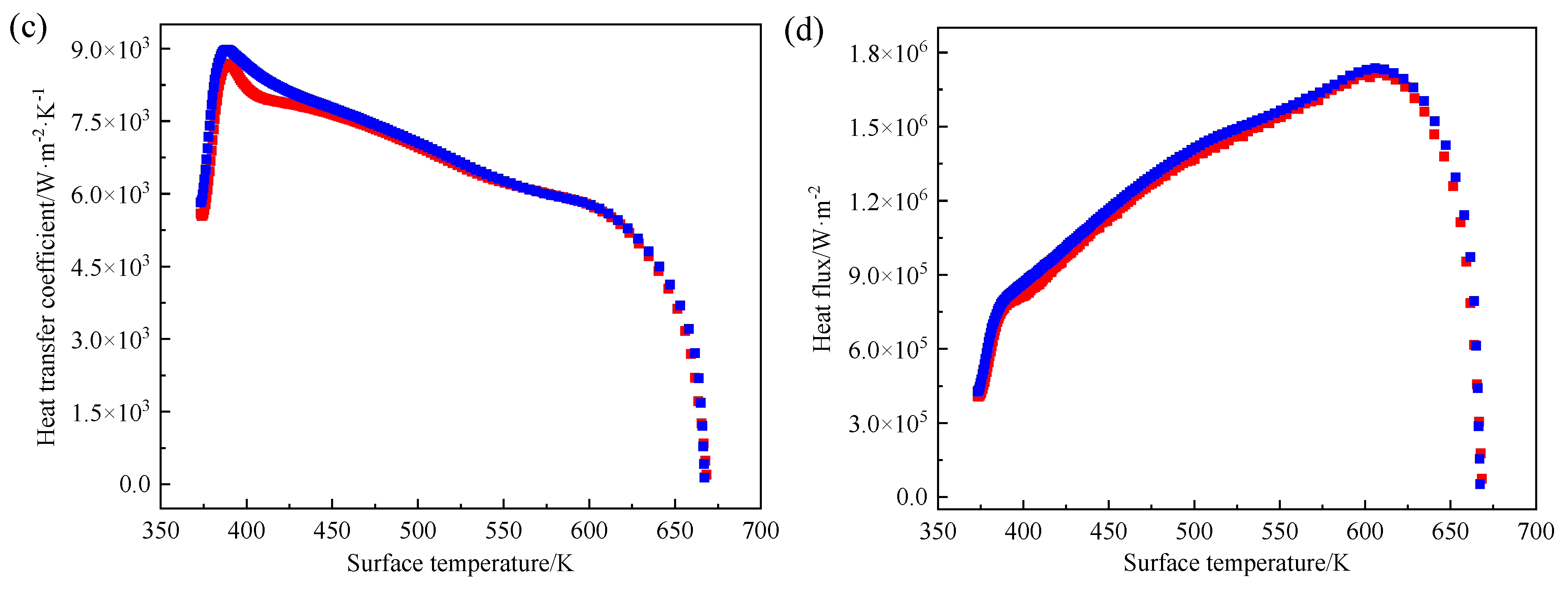
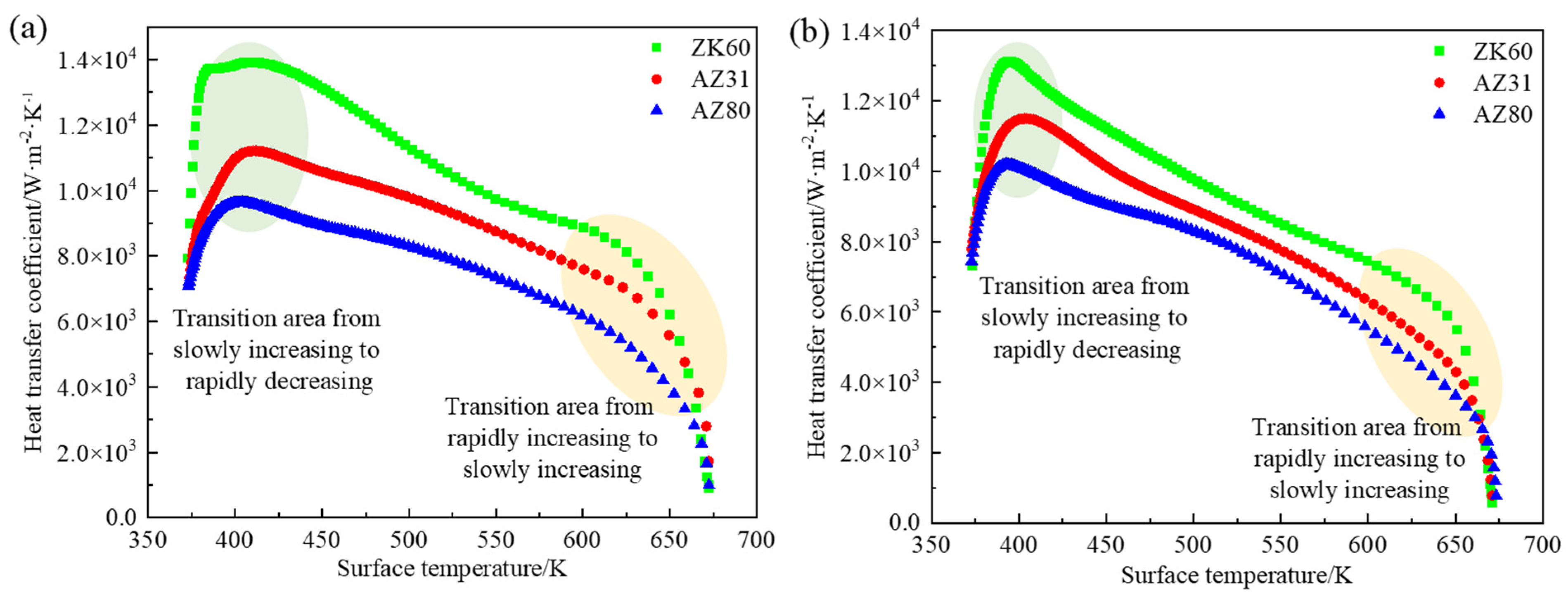
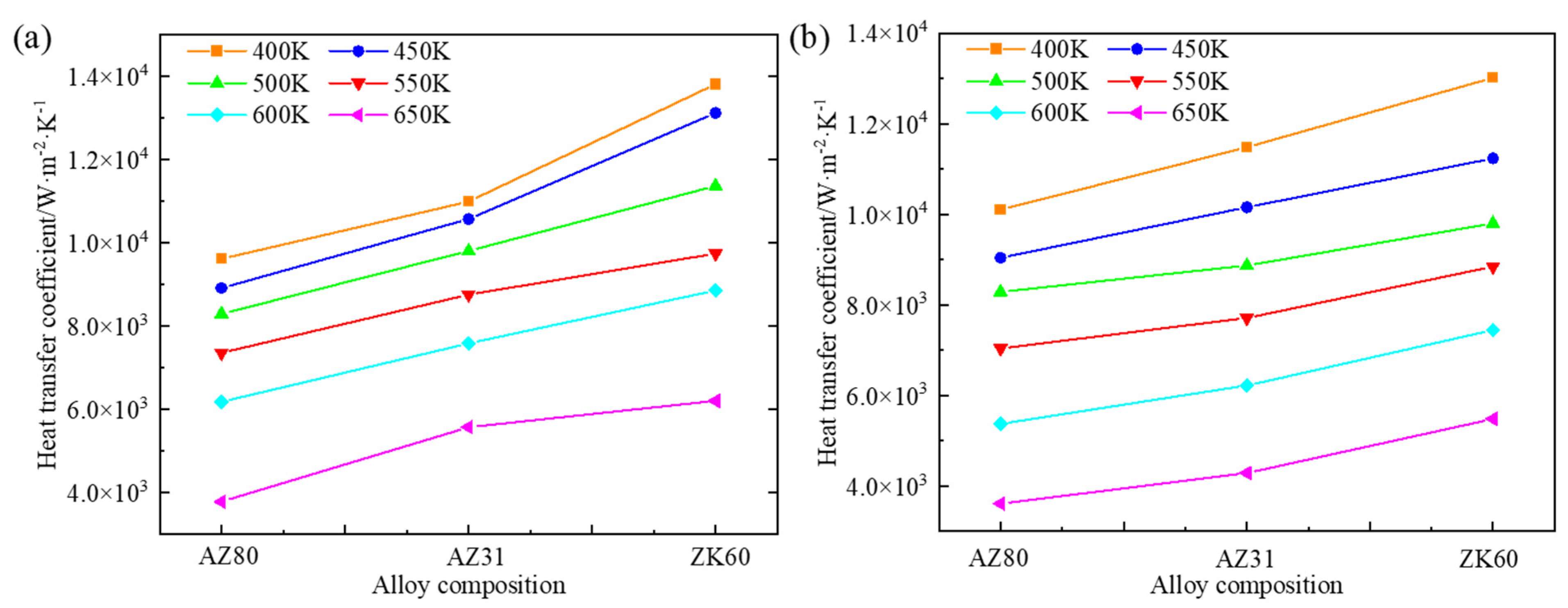
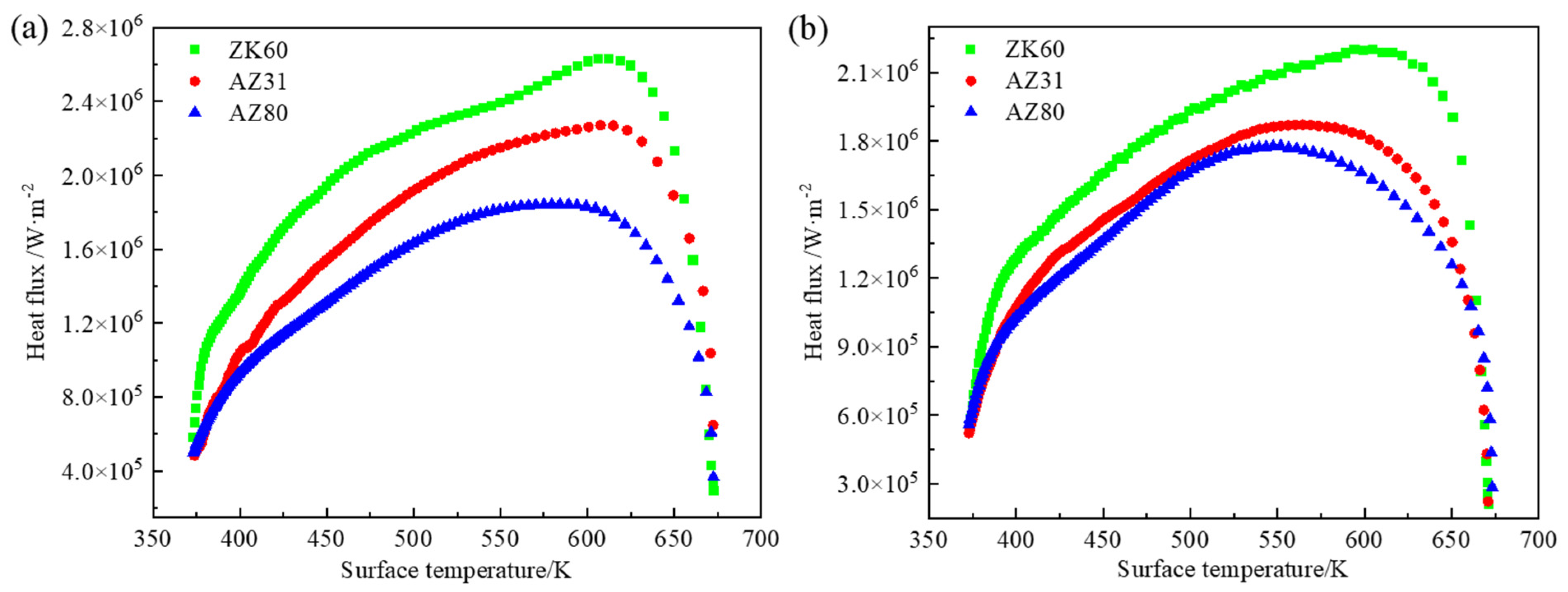
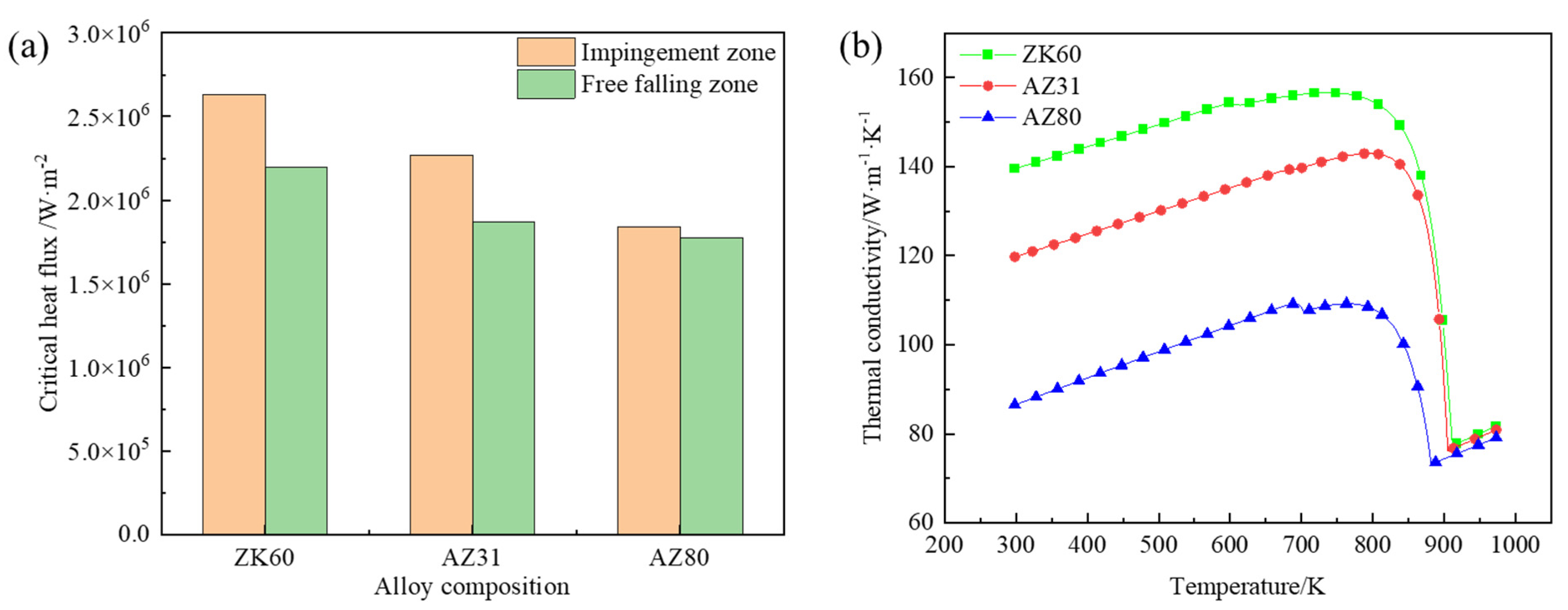
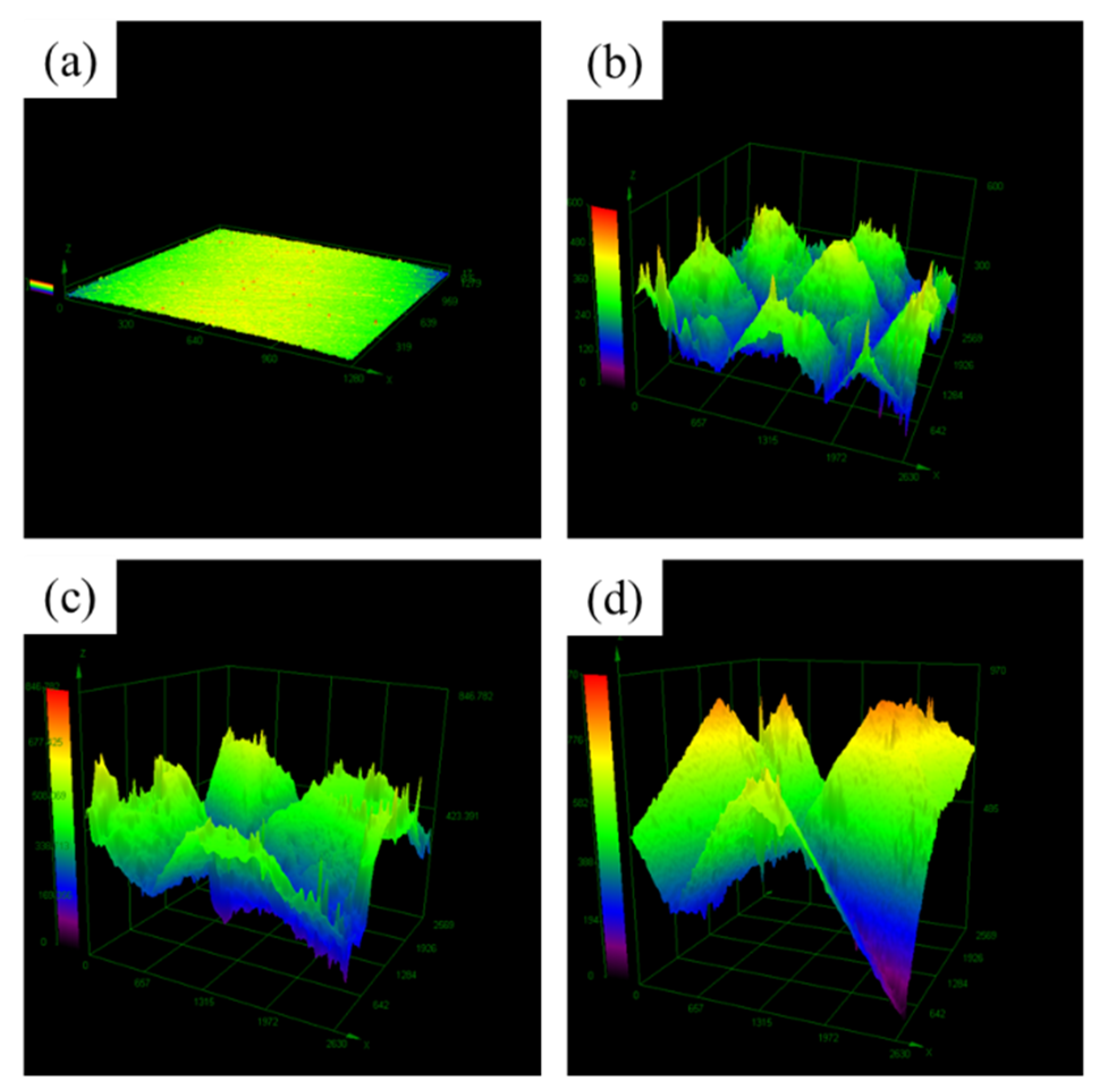
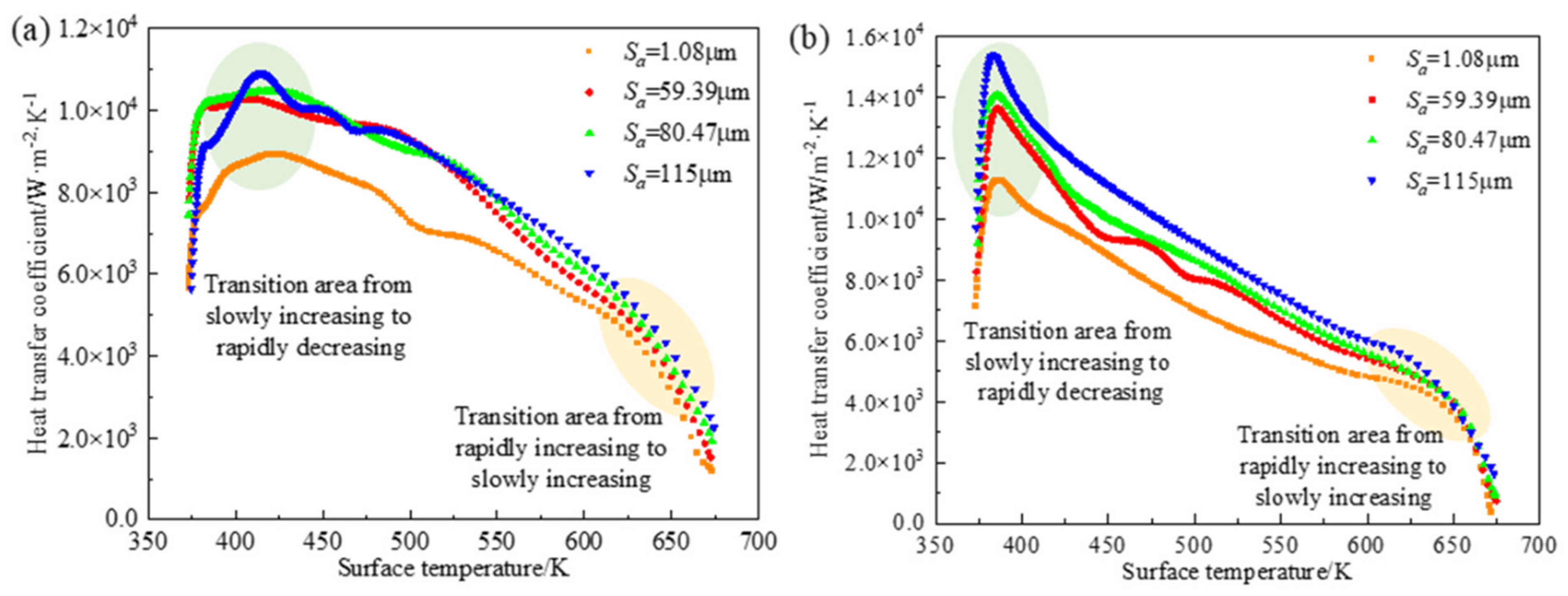

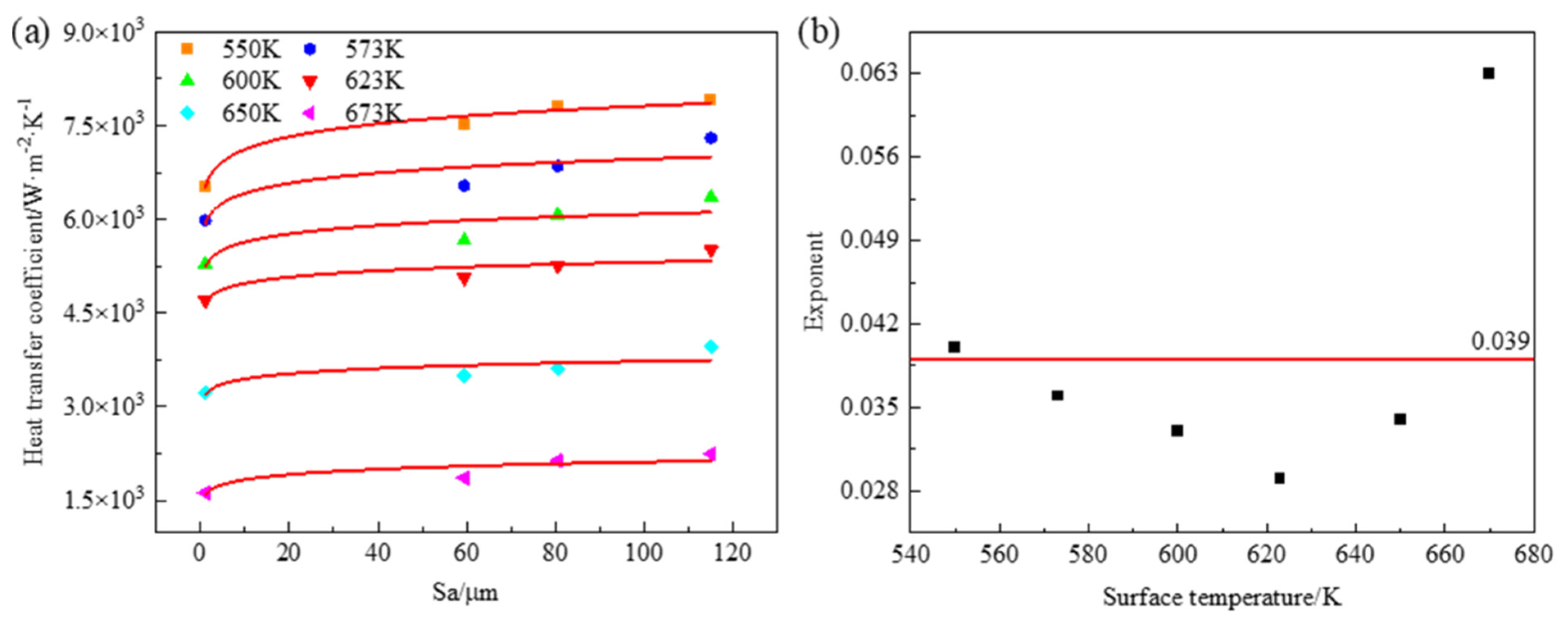

| Roughness | Sample 1 | Sample 2 | Sample 3 | Sample 4 | Sample 5 |
|---|---|---|---|---|---|
| Sa/μm | 1.08 | 59.39 | 80.47 | 115 | 55.31 |
Publisher’s Note: MDPI stays neutral with regard to jurisdictional claims in published maps and institutional affiliations. |
© 2022 by the authors. Licensee MDPI, Basel, Switzerland. This article is an open access article distributed under the terms and conditions of the Creative Commons Attribution (CC BY) license (https://creativecommons.org/licenses/by/4.0/).
Share and Cite
Hu, W.; Jia, Y.; Chen, X.; Le, Q.; Chen, L.; Chen, S. Determination of Secondary Cooling Zone Heat Transfer Coefficient with Different Alloy Types and Roughness in DC Casting by Inverse Heat Conduction Method. Crystals 2022, 12, 1571. https://doi.org/10.3390/cryst12111571
Hu W, Jia Y, Chen X, Le Q, Chen L, Chen S. Determination of Secondary Cooling Zone Heat Transfer Coefficient with Different Alloy Types and Roughness in DC Casting by Inverse Heat Conduction Method. Crystals. 2022; 12(11):1571. https://doi.org/10.3390/cryst12111571
Chicago/Turabian StyleHu, Wenyi, Yonghui Jia, Xingrui Chen, Qichi Le, Liang Chen, and Songhua Chen. 2022. "Determination of Secondary Cooling Zone Heat Transfer Coefficient with Different Alloy Types and Roughness in DC Casting by Inverse Heat Conduction Method" Crystals 12, no. 11: 1571. https://doi.org/10.3390/cryst12111571
APA StyleHu, W., Jia, Y., Chen, X., Le, Q., Chen, L., & Chen, S. (2022). Determination of Secondary Cooling Zone Heat Transfer Coefficient with Different Alloy Types and Roughness in DC Casting by Inverse Heat Conduction Method. Crystals, 12(11), 1571. https://doi.org/10.3390/cryst12111571








